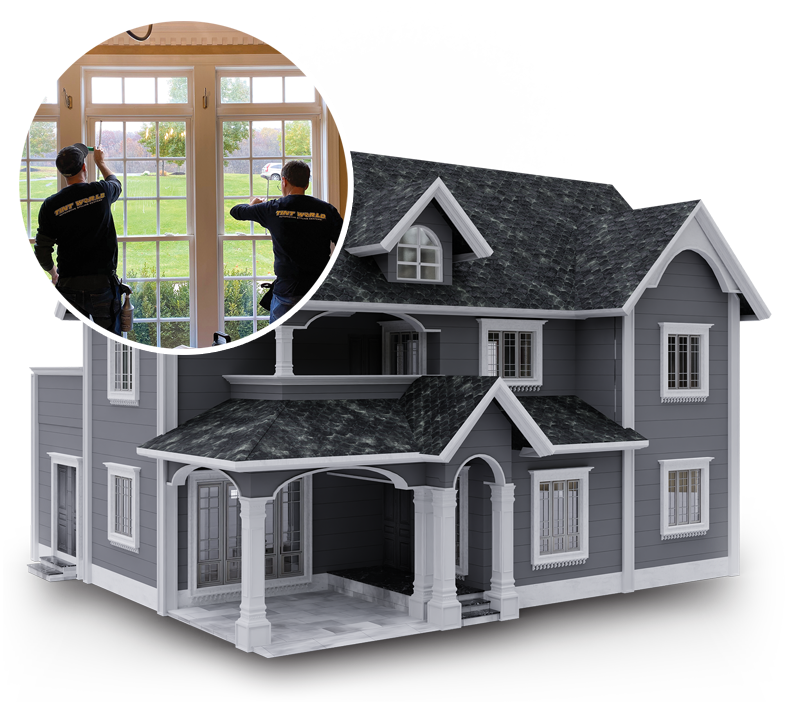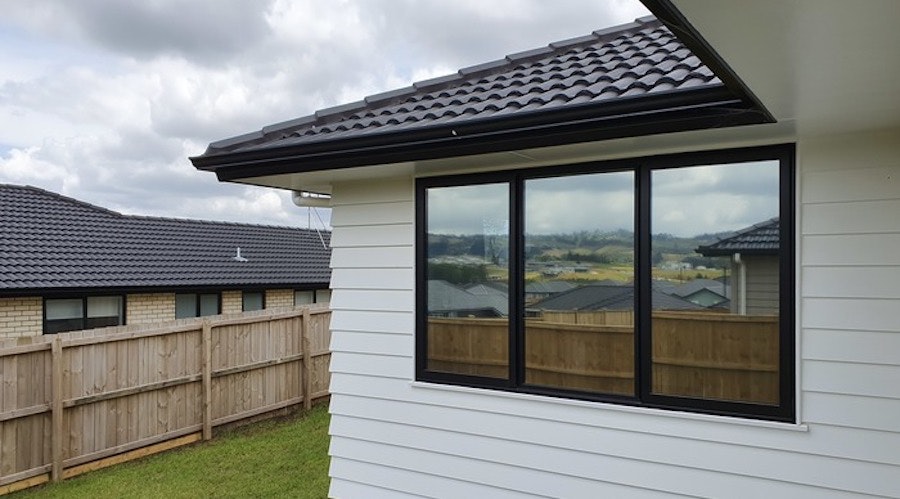Residential Window Tint: An Overview to Choosing the Right Shade
Residential Window Tint: An Overview to Choosing the Right Shade
Blog Article
Just How Residential Window Tinting Improves Your Home's Energy Performance
Residential home window tinting offers a compelling option for house owners looking for to enhance power efficiency within their living spaces. By applying specialized films to home windows, it properly lowers heat transfer, therefore maintaining interior temperatures and decreasing the need for excessive home heating or cooling.
Recognizing Home Window Tinting
Understanding window tinting is crucial for home owners looking for to improve both convenience and energy effectiveness in their space. Residential Window Tint. Window tinting entails the application of a slim film to the interior or outside surface area of glass windows. This film can substantially regulate the amount of sunshine and warm that gets in a home, thus influencing indoor climate conditions
There are various types of home window tinting movies readily available, each with distinct buildings. The efficiency of home window tinting is usually measured by its Visible Light Transmission (VLT) portion, which suggests exactly how much light can pass through the movie.
Benefits of Power Effectiveness
Window tinting not just boosts appearances but also plays a significant duty in enhancing energy efficiency within residential areas. By decreasing warmth transfer through windows, colored films produce a more secure interior climate, which can lead to significant reductions in power consumption for heating & cooling. This energy effectiveness converts right into reduced utility costs, offering home owners with considerable long-lasting savings.

In addition, home window tinting boosts the comfort of living rooms. By minimizing glare and blocking dangerous UV rays, colored windows produce a more pleasant environment, which can lead to improved wellness for residents. The defense against UV rays also helps preserve furnishings and floor covering from fading, contributing to the durability of house things.
Just How Tinting Works
Tinting movies operate via a mix of advanced products and modern technologies created to control the quantity of solar power getting in a home. Largely composed of polyester, these movies typically incorporate metallic or ceramic particles that absorb and show heat. This twin capability allows them to dramatically reduce the infiltration of ultraviolet (UV) rays and infrared radiation while allowing noticeable light to go through.
The effectiveness of home window tinting is measured by its solar warm gain coefficient (SHGC), which suggests just how much solar power is sent through the window. Lower SHGC worths are more suitable as they signify greater heat being rejected. In addition, home window colors can feature a range of tones, allowing home owners to tailor their aesthetic choices while improving power efficiency.
Additionally, these films act as a barrier, stopping heat loss throughout chillier months by mirroring interior heat back into the living area. This thermal insulation effect enhances the cooling benefits acquired throughout warmer months, adding to a balanced interior environment year-round. By taking care of solar power effectively, property home window tinting not just boosts convenience yet also plays a vital function in decreasing energy consumption and decreasing utility costs.
Choosing the Right Color

There are numerous sorts of home window films available, consisting of colored, metalized, and ceramic. Colored movies are economical however might have restricted longevity. Metalized films supply far better warm denial yet can conflict with digital signals. Ceramic movies supply superb heat control without jeopardizing exposure and are highly resilient, making them a preferred option.
Visible light transmission (VLT) is an additional essential variable, as it indicates the quantity of all-natural light that can go through the colored glass. Property owners should choose a tint with a VLT that matches their lighting preferences while still supplying appropriate glare decrease.
Furthermore, assessing the solar warm gain coefficient (SHGC) can assist establish just how well a tint can obstruct warm from sunshine. A lower SHGC indicates much better heat control, inevitably enhancing energy effectiveness.
Installation and Maintenance Tips
Appropriate installation and maintenance are vital components in making the most of the advantages of household window tinting. Experts also use specialized techniques and tools, which can improve the longevity and efficiency of the color.
Complying with setup, maintenance is crucial to prolong the life of the home window movie. It is recommended to wait at least 30 days before cleaning the colored windows to enable the sticky to heal totally.
Additionally, normal examinations are beneficial. Inspect for any peeling click over here or bubbling, go right here which could suggest inappropriate installment or use with time - Residential Window Tint. Addressing these issues immediately can prevent more damage and preserve energy performance. By adhering to these installment and upkeep tips, house owners can guarantee their window tinting proceeds to provide significant power savings and convenience for years to come.
Verdict
In conclusion, residential window tinting serves as an effective service for boosting power performance within homes. By minimizing heat transfer and obstructing dangerous UV rays, home window films contribute to decrease energy consumption and improved indoor convenience.
Home window tinting entails the application of a thin movie to the inside or exterior surface of glass windows. By decreasing warm transfer via windows, tinted movies create an extra secure indoor climate, which can lead to significant reductions in power consumption for home heating and air conditioning.The efficiency of home window tinting is determined by its solar warmth Source gain coefficient (SHGC), which shows exactly how much solar power is sent with the window. By managing solar power effectively, property home window tinting not only boosts convenience however likewise plays an essential duty in reducing power intake and reducing utility costs.
By minimizing heat transfer and obstructing hazardous UV rays, home window movies add to lower energy consumption and improved indoor comfort.
Report this page